South German Engraver
Conforming to an archaic format of 52 cards with banner 10s, female 'Sotas', horsemen and kings, the pack is of interest on account of a number of other packs with similar characteristics surviving elsewhere, suggesting an archaic variant of the Spanish-suited pack.
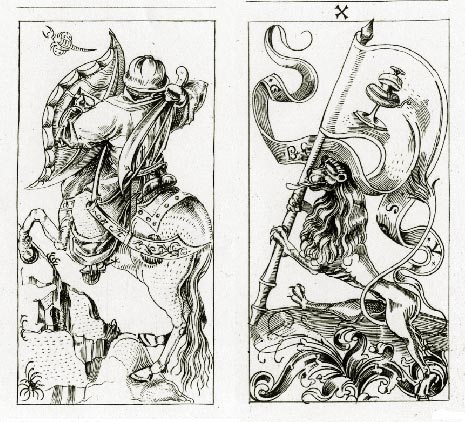
The pack of cards by the South German Engraver, c.1496
During the second half of the fifteenth century, with printing technology commercially established and playing cards widely produced, a succession of masterly German engravers practised their art and decorative playing cards reached a zenith. The “The South German Engraver” was one such craftsman who produced an elaborate, Gothic interpretation of the Spanish-suited pack which appears to commemorate the marriage, in 1496, of Felipe I of Spain and Doña Juana, daughter of Ferdinand and Isabella.
Sometimes referred to as "
(Click here to see enlargement and engraver's monogram)
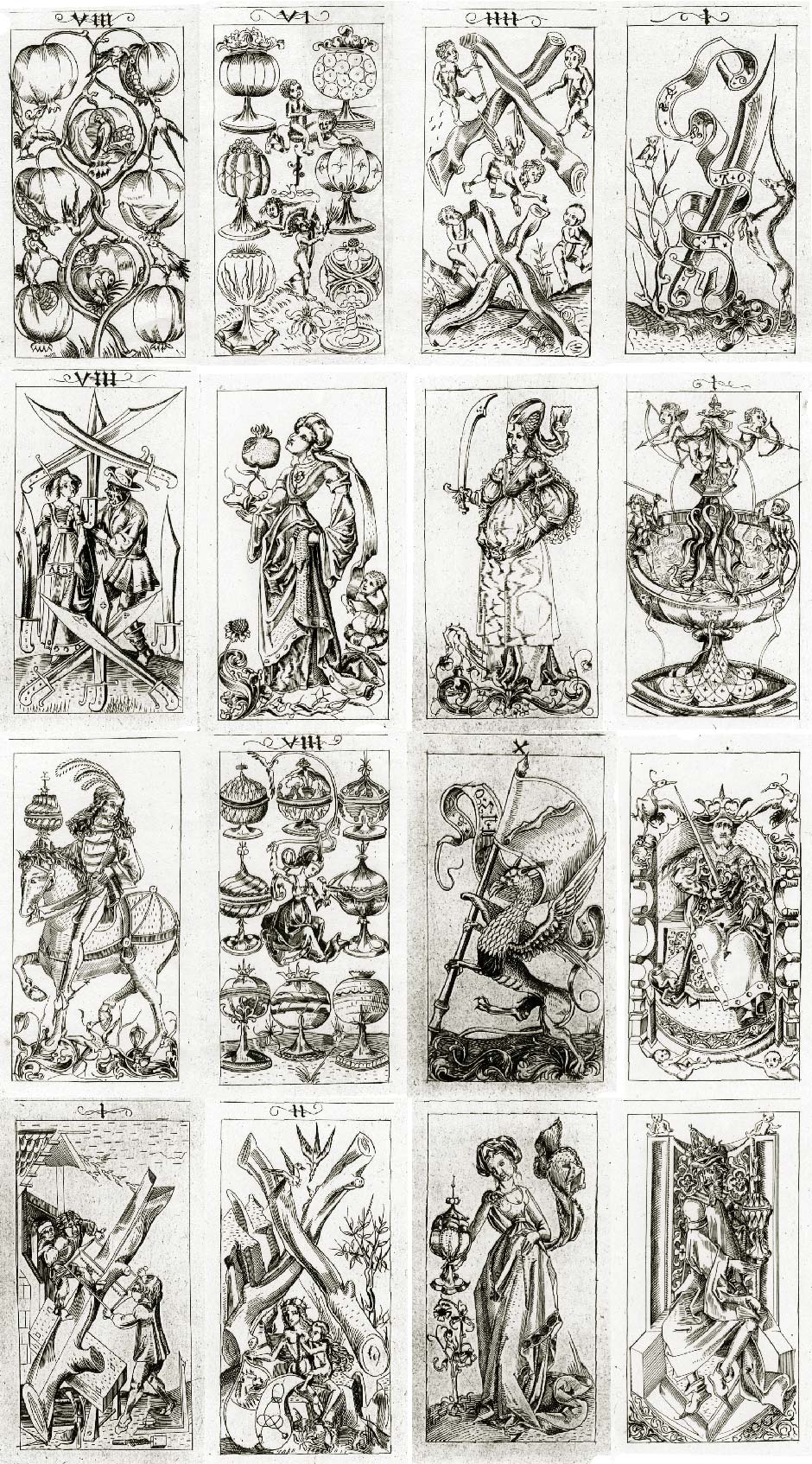
Conforming to an archaic format of 52 cards with banner 10s, female 'Sotas', horsemen and kings, the pack is of interest on account of a number of other packs with similar characteristics surviving elsewhere, suggesting an archaic 'prototype' for the Spanish-suited genre. As can be seen, the cards are decorated - not quite 'transformed' - with birds, animals, plants, children and other miniature creatures. The suit sign of pomegranates probably alludes to the recently reclaimed kingdom of Granada. Several original examples of this pack are known, although none are coloured, and facsimile editions have also been produced.
See also:
The Upper Rhine Master of the Banderoles Early German Engraved Cards Gothic Spanish-suited Playing Cards Ambras Hunting Pack The Stuttgart Pack History Hunting Germany Spain Italy Portugal Master of the Playing-Cards Master PW Circular Playing Cards.

By Simon Wintle
Member since February 01, 1996
Founder and editor of the World of Playing Cards since 1996. He is a former committee member of the IPCS and was graphics editor of The Playing-Card journal for many years. He has lived at various times in Chile, England and Wales and is currently living in Extremadura, Spain. Simon's first limited edition pack of playing cards was a replica of a seventeenth century traditional English pack, which he produced from woodblocks and stencils.
Trending Articles
Popular articles from the past 28 days
Related Articles
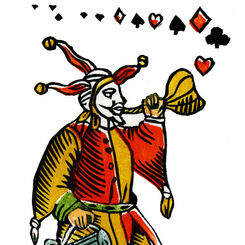
Woodblock and Stencil Joker
A limited edition art print of the 1984 woodblock joker.
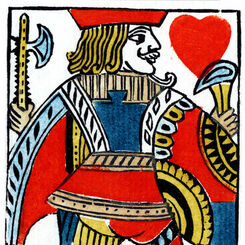
Woodblock and Stencil Jack of Hearts
A limited edition art print of the Jack of Hearts 1984 woodblock joker.
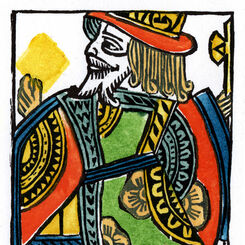
Woodblock and Stencil King of Diamonds
A limited edition art print of the King of Diamonds 1984 woodblock joker.
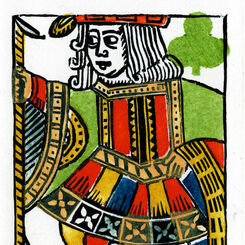
Woodblock and Stencil Jack of Clubs
A limited edition art print of the Jack of Clubs 1984 woodblock joker.
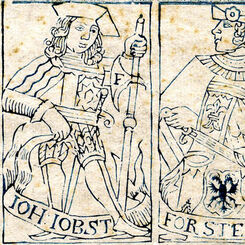
Uncut Sheet by Johann Jobst Forster
A proof sheet containing twelve court cards of conventional French type.
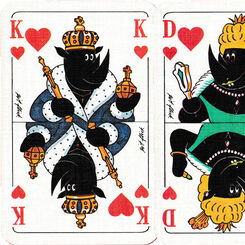
Mit Rhino auftrumpfen
Black rhinos on a publicity pack for Armstrong, a flooring company, with comic designs by Pit Flick....
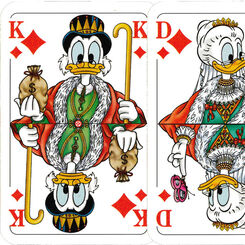
Walt Disney Cards II
Mickey, Minnie, Pluto and other familiar Disney characters.
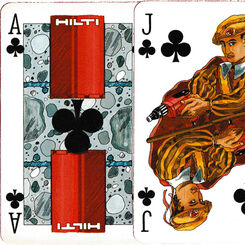
Hilti I
Promotional pack for Hilti power tools, with courts in medieval costume and non-standard pips.
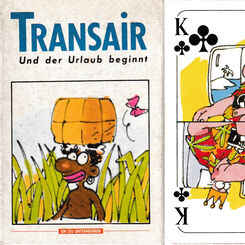
Transair
Humorous designs promoting Transair, a German charter flight operator.
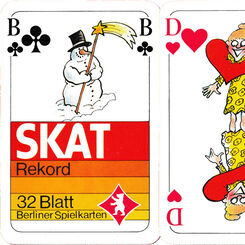
Merz Pharma Skat
Comic designs promoting Merz Pharma, a German drug company.
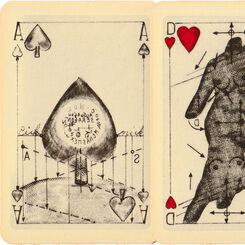
escART, ec-ART, SKAT
Fully illustrated pack printed from etchings by Johannes Vennekamp.
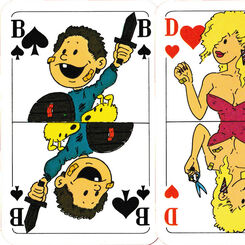
Hansaplast®
Advertising pack for Hansaplast, with comic courts sporting sticking plasters.
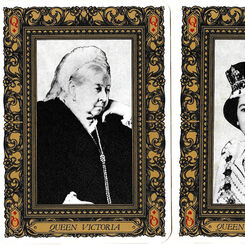
British Monarchs
Commemorating the royal wedding of Charles, Prince of Wales to Lady Diana Spencer on the 29th
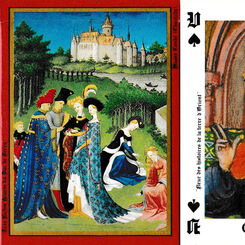
Jeu Gothique
‘Jeu Gothique’ illustrating the Gothic period in France, published by Editions Dusserre.
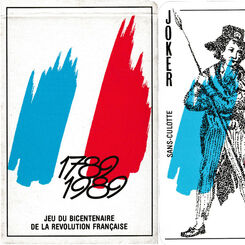
Jeu du Bicentenaire de la Révolution Française
Pack created by Yannick Pennanguer commemorating the bicentenary of the French Revolution and the ce...
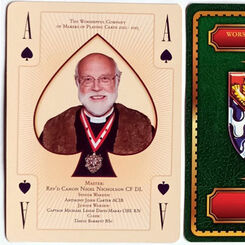
Past Masters’ Association Presentation Pack
The Worshipful Company of Makers of Playing Cards Past Masters’ Association Presentation Pack, 2013....
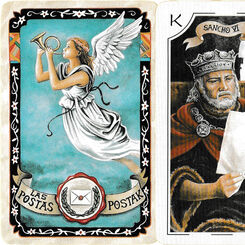
Postak – Las Postas
‘Postak - Las Postas’ playing cards commemorating the history of the Basque postal service, Spain, 1...
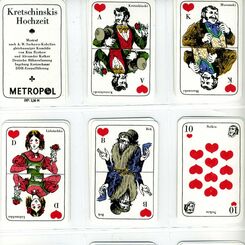
Wedding of Krechinsky • Свадьба Кречинского
A pack of cards depicting characters from the famous play "The Wedding of Krechinsky" by Sukhovo-Kob...
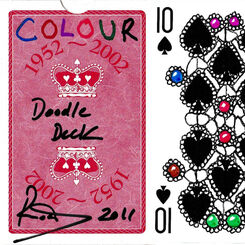
Colour doodle deck
“1952-2002 commemorative deck” customised with doodles by an uncredited artist, UK, 2011.
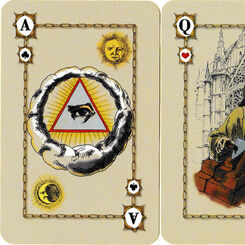
Freimaurer Spielkarten / Masonic playing cards
Masonic playing cards created by Ivan Wojnikow, 2004.
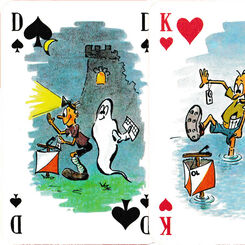
Orientierungslauf Skat
Humorous designs by Helmut Härtelt on the subject of orienteering.
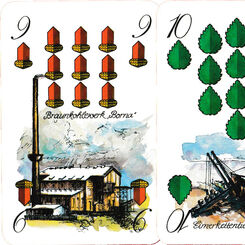
Borna Skat
Publicity pack for the Saxon town of Borna, with designs by Andreas Wachter.
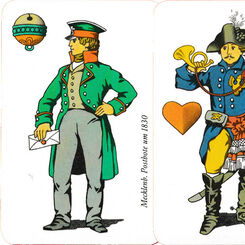
Postgeschichte
A celebration of different postal systems in Germany from 1630 to 1850, with designs by Volker Hartm...
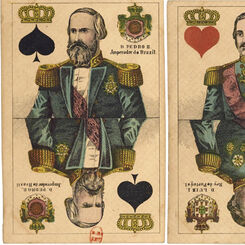
Kings and Queens of Brazil & Portugal
Historical playing cards by C. L. Wüst depicting monarchs of Brazil and Portugal.
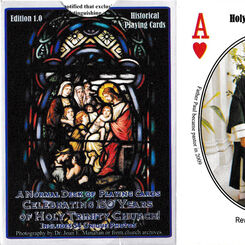
Holy Trinity Church playing cards
Holy Trinity Church commemoration playing cards, USA, 2011.
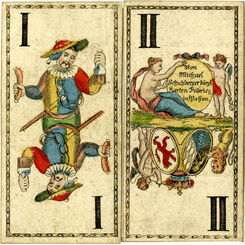
Mythological tarot by Michael Schatzberger
Mythological tarot by Michael Schatzberger, Passau, Bavaria, early 19th century.
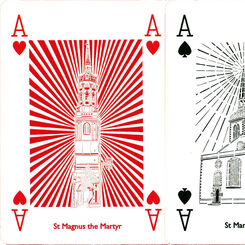
Wren 300 playing cards
Papercuts by Chloe Campbell of the 52 Wren churches in the City of London.
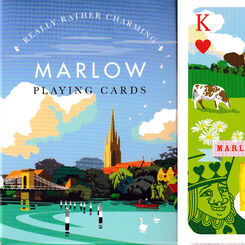
Marlow playing cards
Visitor attractions and businesses to be found in Marlow, Buckinghamshire.
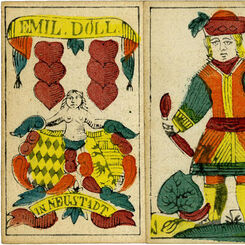
Ansbach pattern by Emil Doll
Later Ansbach or Nürnberg pattern by Emil Doll, Neustadt.
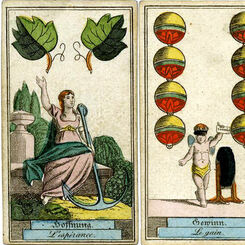
Cartomancy deck by Johann Ernst Backofen
German-suited Cartomancy deck published by Johann Ernst Backofen, Nürnberg.
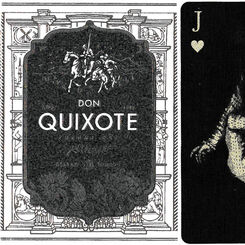
Don Quixote playing cards
Don Quixote playing cards designed by Nam Tibon, USA, 2016.
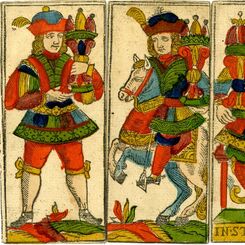
Trappola pack by Joseph Fetscher
Trappola pack published by Joseph Fetscher, Graz, 1739.
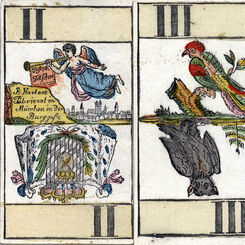
Animal Tarot by Joseph Fetscher
French-suited Natural History Tarot deck by Joseph Fetscher, Munich, c.1820.
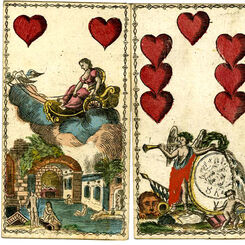
Heathen Wars
German-suited ‘Heathen War’ playing cards published by Joseph Fetscher, Munich, c.1820.
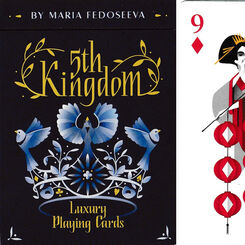
5th Kingdom playing cards
5th Kingdom Luxury playing cards designed by Maria Fedoseeva, USA, 2020.
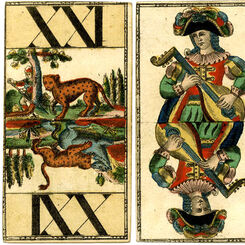
Mythological and Allegorical tarot
Mythological and Allegorical tarot produced by Peter Paul Fetscher junior, Munich.
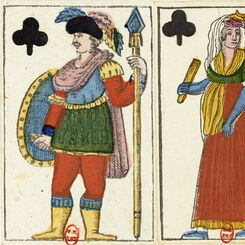
Fantasy deck by Joseph Fetscher
Fantasy French-suited pack produced by Joseph Fetscher, Munich, c.1825.
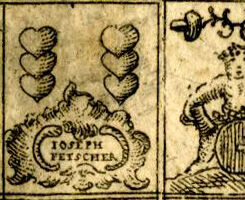
Miniature playing cards by Joseph Fetscher
Uncut sheet of miniature Bavarian playing cards by Joseph Fetscher.
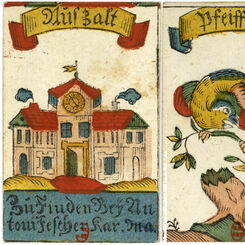
Vogelspiel
Vogelspiel, a German card game known as the “cuckoo game” also known as “Gnau”.
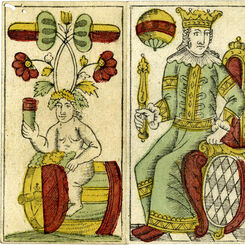
Bavaria pattern
Classic German-suited Bavarian pattern by Joseph Fetscher, Munich, early 19th century.
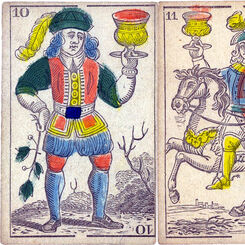
Spanish-suited deck by J.Y. Humphreys
A rare Spanish-suited deck published by J.Y. Humphreys, Philadelphia, c.1816.

Animal Tarot by Andreas Benedict Göbl
French-suited Animal Tarot deck produced by Andreas Benedict Göbl, Munich.

Standard French-suited Bavarian deck by Göbl
French-suited Bavarian deck by Andreas Benedict Göbl, late 18th c.
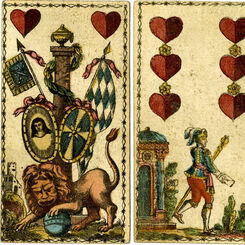
Historical playing cards by Joseph Fetscher
Historical playing cards by Joseph Fetscher, Munich, c.1820.


